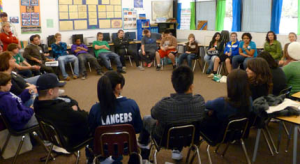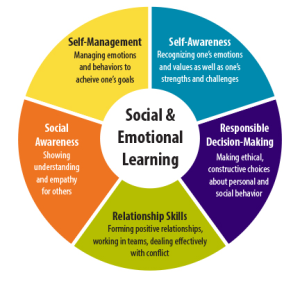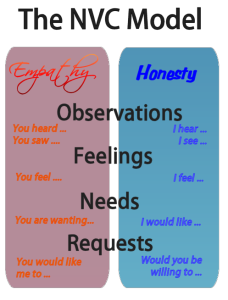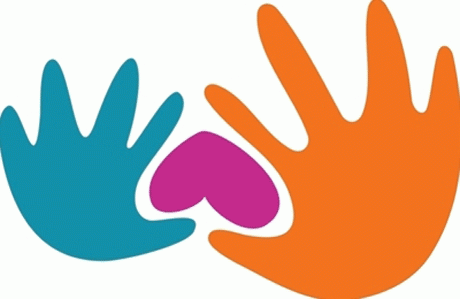Teaching Peace in Schools live Summit
Author: Global Prenatal Initiative

The Peace Alliance empowers civic engagement toward a culture of peace. They are an alliance of organizers and advocates throughout the United States taking the work of peacebuilding from the margins of society into the centers of national discourse and policy priorities. Their network includes volunteer grassroots teams in cities, towns, colleges and high school campuses across the nation.
Here is a resume of their Teaching Peace in Schools live Summit:
RESTORATIVE CIRCLES:
 First, we should start with the original meaning of the word school which describes the place where the rules are suspended and no laws are imposed. This is not what most of students are experiencing about school. And it seems that often teachers have as a primary job of maintaining order. The power only belongs to the teachers, administrators… and students don’t feel heard or safe to express their point because they know that the answer will be punishments which are not effective ways of creating listening.
First, we should start with the original meaning of the word school which describes the place where the rules are suspended and no laws are imposed. This is not what most of students are experiencing about school. And it seems that often teachers have as a primary job of maintaining order. The power only belongs to the teachers, administrators… and students don’t feel heard or safe to express their point because they know that the answer will be punishments which are not effective ways of creating listening.
It’s empowering to have the power distributed. It will be important to stop trying to manage other people’s behavior. So students stop feeling apart or not engaged. But how can we respond to conflict without imposing rules. It’s the dialogue, not just as a conversation but as a real practice. Because it’s not about having different view of well-being, it’s just that people are not listening to each other. We all want to the same, to feel safe, loved and heard.
In order to respond to challenging, painful situation, conflict or violence, they created some restorative circles in schools. The aim is to create a welcoming environment, make this space safe and a moment of connection, a celebration of smile where teachers or administrators understand who the students are and not judging them based on what they did.
It’s about creating the conditions safer so students will feel heard in a way they would transform their behavior. So the most important pieces in the practice will be respect, responsibility but also value self-care. We have everything that we need inside ourselves and when the power and the ego become less an issue it’s easier to focus on what we really need to focus on.
We need to know how to be relational because we are relational being and we need to honor that. We want to make sure to connect with the humanity of other people otherwise we’ll always see them as others and not like the one we want to connect with. And in order to achieve this, dialogue must be the key.
Everyone who feels concerned by the youth can wonder how we can teach and practice the skills required so the peace becomes the norm in our schools.
Teaching Peace in schools can transform our world. There is so much encouraging work around the world but we need to carry on.
SOCIAL AND EMOTIONAL LEARNING
 Social and emotional learning is the process which through children applies the knowledge, the attitude and skills necessary to understand, manage emotion, feel and show empathy for others. It’s also about establishing and maintaining positive relationships to make responsible decisions.
Social and emotional learning is the process which through children applies the knowledge, the attitude and skills necessary to understand, manage emotion, feel and show empathy for others. It’s also about establishing and maintaining positive relationships to make responsible decisions.
Learning is only effective in a supportive context to make learning meaningful. It really helps kids to have more understanding in their lives. A simple practice is the meditation which will reduce stress and increase the performance.
The key is also to make learning something challenging, engaging and meaningful. The goal is to help those kids to become caring parents, good employers or employees…
As we are living in a very competitive world, if the children can self-regulate, manage their own emotion, they will boost their academic performance. There would be less emotional stress, good social behavior and also less problems of drugs or alcohol.
If we want a compassionate and tolerant society, we need to teach these skills at school.
In each school where they experienced the social and emotional learning, data show that the climate in the class has changed. Less disturbing behavior, even teachers can feel there is a more peaceful environment and they also notice improvements in reading, math…
The key is also that everyone should use the same language even after school with the parents so it could become a way a being and how to be in the world. So it’s necessary to include the parents in the process as they are the role model.
Healthy food is also a key point which has to be part of the whole process. Children need to eat fresh food to increase their energy level.
Teach them how to eat, to relax, how to reduce their stress, increase their focus attention and awareness. They can become more and more aware, cultivate their own awareness and pay attention to what’s going on inside them.
It helps them to create this space between the stimulus and the reaction they are able to give. They can stay away from bad situations.
 A radical quality of social change can be done within these following steps:
A radical quality of social change can be done within these following steps:
- Identify the key allies in the school and who are the people having the power to shift the actual structure
- Celebrate what’s already going great and listen with empathy to find out what’s not going the way you’d like
- Use nonviolent communication which is the language of the heart and can be seen as the democracy in action. As far as the kids are concerned, it’s only awakening what’s already inside. They are already emotionally connected. Parents and teachers needs to be taught.
This process needs to be experienced and seen by teachers. They have to realize by themselves they can do differently and have to be inspired to do it. And only under those circumstances, they would be the agent of the change.
We need to help the teachers so they can support the next generation. It can put an end to the violence in our world and so everyone will finally see the humanity of each other rather than see the other as an enemy. Opening your heart and holding the intention to care for each other and we can make everyone’s life more beautiful.

Author: Amelie Paterne
Editor: Ioana Frandes
-
Published on
February 21st, 2016 -
Discussion
No comments yet -
Categories: Feature, Uncategorized

